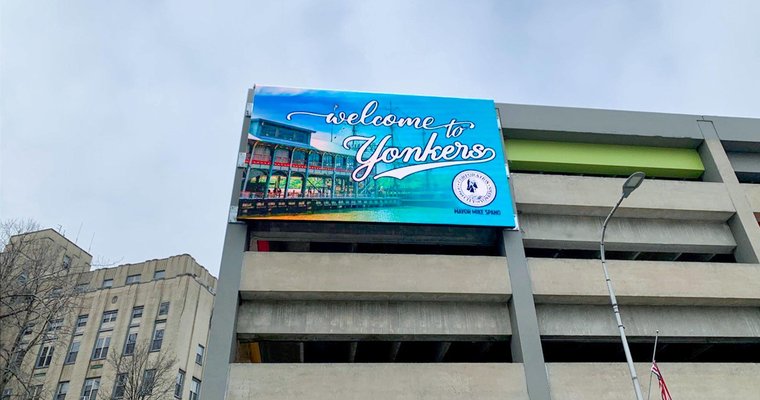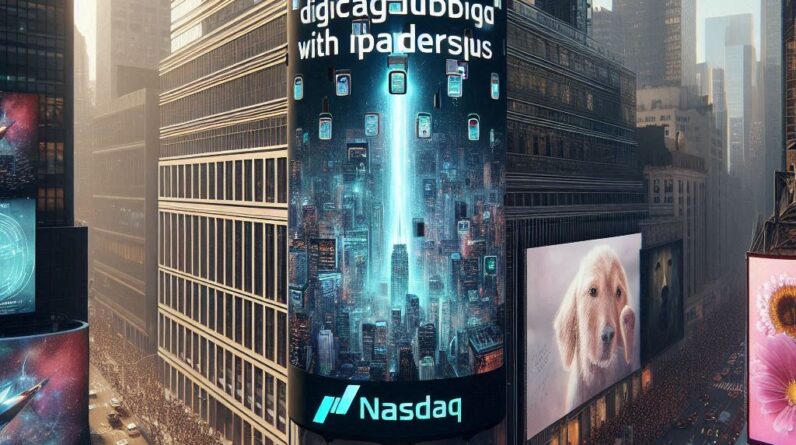
[ad_1]
Panelists shared core trends and rules for success in the evolving landscape of self-service automation at this year’s Self-Service Innovation Summit in Miami, Florida.
 Panelists Randy Chilton, chief marketing officer, National Entertainment Network; Phil Deckers, director of technical solutions, Sodexo InReach; Glen Ryniewski, owner, Soaring Strategies; Manuela Zoninsein, CEO and founder, Kadeya; and Mitul Patel, director of OEM sales, North America, Zebra Technologies, ponder self service success. Photo: Networld Media Group/Willie Lawless.
Panelists Randy Chilton, chief marketing officer, National Entertainment Network; Phil Deckers, director of technical solutions, Sodexo InReach; Glen Ryniewski, owner, Soaring Strategies; Manuela Zoninsein, CEO and founder, Kadeya; and Mitul Patel, director of OEM sales, North America, Zebra Technologies, ponder self service success. Photo: Networld Media Group/Willie Lawless.
Technology is moving faster than ever, and operators are struggling to keep up. However, the sheer breadth of choices available, and the high cost of many options, can make it difficult to navigate change and innovation in a way that boosts your ROI, delights your customers and reduces your day-to-day headaches — rather than adding to them! From AI-powered customer service avatars to pay-with-your-palm POS systems and restaurant robots, which way is up?
This was the topic tackled by a panel of experts at the annual Self-Service Innovation Summit, hosted by Networld Media Group in Miami, Florida, a gathering of operators, experts and service providers that gathers each year to discuss the cutting edge of self-service innovation, in a session entitled “Innovation: what’s hot, what’s not?”
Insights included five pillars of success in the changing market:
- AI and data are essential tools for success.
- Sustainability is central.
- Micro markets are a key to self-service success.
- Retail self service is growing, evolving; do your research before kiosk launches.
- Balance self service with the human touch.
1. AI and data are essential tools for success
In a theme that will be familiar to data scientists, the sheer volume of customer and operations data that can be generated by modern technologies — including POS systems, analytics stacks, security systems and more — can be as overwhelming as it can be useful.
Data, in any quantity, is only usable when it becomes actionable information, so make sure that (a) your systems can talk to each other, (b) they are generating useful output information, (c) you are sharing data equitably and in compliance with regulations among your operations and partner ecosystem. This is part of why choosing your software stack and your partners carefully is integral to your success.
One example happens every day in airports, according to panelist Glen Ryniewski, owner at Soaring Strategies, a business development firm specializing in U.S. and international airports; he noted that integrated systems that use AI correctly can make operations smoother while serving customers better.
“So, the car companies are talking to the hotel companies who are talking to Starbucks who are talking to the TSA who is now talking to the airlines. So I believe there are green fields out there for AI to collectively gather all this data, where you’ll just have a roadmap and guidance in travel, but it could extend and migrate into much more of your life.
“If you want to know the two companies that do it pretty well, it’s the airlines, and Amazon. One of the things that they do very well is that they communicate with you. And you always have a vested interest with them, because you want to know when your package is coming, and you want to know when the flight is coming — so it’s real-time information. AI can bring the real-time information, it’s growing exponentially, but all of the data has got to sort of come together and be queued into one unit, into one source. There’s been various attempts throughout my tenure in the airport industry, and no one’s really captured queuing the AI data — but it’s all about the sensitivity of time and saving [time].”
2. Sustainability is central
Across the business and technology world, sustainability is a hot topic. But in mass consumer culture, especially for busy travelers, how can operators bring their customer base to embracing sustainability and all its benefits?
It comes down to behavior modification in the view of Manuela Zoninsein, CEO and founder at Kadeya, a closed-loop beverage vending system designed to eliminate single-use beverage containers with smart bottling stations and reusable bottles.
“Behavior change is one of the key challenges to adoption of reuse, hands-down,” Zoninsein said. “And the North Star for Kadeya — the founding impetus — was always: ‘How do we emulate single-use and outperform single-use according to its own standards?’ And for us, we put it as ‘CCQ’: cost, convenience, quality. For us, the reuse aspect is just a design constraint. And I think that’s where the reuse industry has historically gotten it wrong, that they mistook a design constraint for a business model.”
By integrating sustainability from the beginning in the design for your product/service, and by integrating strong data, it’s possible to revolutionize the sustainability of your business.
“So, to interact at the station, you use a QR code, just like you would when you’re going to unlock a shared bike. And every bottle has a unique QR code laser etched into the bottom. So just like bike sharing, we understand the throughput and utilization across the whole network. And we can attribute to the individual what they’re consuming,” Zoninsein said.
She added that data integrations allow them to almost gamify the process for each user, showing through an app metrics like how well they are hydrating along with their current carbon footprint — the user can tailor their app to show them data that they find more interesting.
“I think, to Glenn’s point about Amazon and the airlines, historically, a lot of these consumer interaction and behavior apps added a step for the consumer to have to interact with you digitally, and Kadeya, because we’re in the hydration space, which happens multiple times a day for every single human in the world, we have a reason to engage you repeatedly. And people want to know how they’re performing. So we’re integrated on Fitbit, we can integrate very easily on any digital health tool. We’re now seeking HIPAA compliance. So the idea is like we’re doing step trackers for water.”
The convenience of having easy app integration that works with software and devices the consumer is already using makes it fun for the consumer to get involved in a global mission like sustainability that also benefits their health directly, especially when people tend not to track how much water they drink throughout the day.
“This is a fundamental resource,” Zoninsein said. “You can go longer without sleep than you can without water… and huge things are happening, of course, with climate change, and our health, and the quality of the water that we’re consuming. So the way we think about the digital piece — we don’t lead with it — our number one value proposition is delivering you a really convenient high quality beverage.”
Of course, the data piece goes far beyond “gamifying” sustainability – it also has great business applications, especially in terms of AI. Zoninsein said that Kadeya is developing concepts around expansion to industrial workplaces like construction sites, manufacturing plants and military bases. Benefits include safety managers being able to have data and reporting on being in OSHA compliance for hydration (along with the military analogues to the process, such as USAF Black Flag regulations). Safety is enhanced when contextual information is combined with health and hydration information on, say, hot and humid workdays, particularly for at-risk employees — which all impacts ROI, in addition to humanitarian concerns.
“There’s the cost analysis that goes into what happens when your workers are dehydrated,” Zoninsein said. “We estimate that being dehydrated by even 20% can reduce your response time by 40%. So that means more trips, slips and falls — something that a construction site never wants to have.” She also cited a McKinsey report indicating that using AI for station operations can improve the top line by 20% and reduce cost of servicing by 25%.
3. Micro markets are a key to self-service success
In the post-COVID world, as workers come back to physical workplaces, the micro market has a huge place, and data and AI have a large place in optimizing that, according to Phil Deckers, director of technical solutions at Sodexo InReach, a global convenience services provider.
“Micro markets have been a fantastic opportunity in our space,” Deckers said, noting that he worked with Accent Food Services (a Pflugerville, Texas based firm Sodexo acquired in 2022) prior to InReach, during which time he was an early adopter and pioneer of micro markets. “They’re a fantastic option to have in your conversations with your clients. We’ve moved a lot of locations to micro markets, but with micro markets, you have all this real-time data of who’s buying what and you are drowning in data, but it’s so challenging to actually get knowledge out of it.”
AI proved to be an important tool that can crunch all of that data and combine it with geographic, demographic, Nielsen and IRI marketing data, and more, for insights that allow product optimization and scientific experiments on new strategies. Long a staple of the IT world, the mantra of “data-based decisionmaking” (which originated in the ITIL standards) should be a mainstay of your micro market, in Decker’s view.
“And then, beyond that, it’s [about] how we can delight our clients,” he added. “Uber has trained all of us [to think that] you finish a ride, and you give a review. We’ve taken that concept and extended that to our dining operations, so when someone does an order-ahead, when they complete a payment with the app, [it says] ‘Hey! How did we do?'”
This kind of real-time sentiment analysis is crucial, Decker explained, because both the positive and negative reviews (with the ability for text comments) allows you to be agile in leaning into what you’re doing right or quickly fixing what you’re doing wrong. AI is a great catalyst for this agile process management, including the use of AI-powered chatbots that can triage unhappy customers, find resolutions or escalate to human agents.
4. Retail self-service is growing, evolving; do your research before launches
Self-service is a hot topic in retail, but it needs to be implemented carefully, according to Randy Chilton, chief marketing officer at National Entertainment Network, a national amusement and game room operator with more than 13,000 locations throughout the U.S.
There are two challenges in the retail self-service space, Chilton explained. First, a retailer may know what they are looking for and specifically ask for help with a pain point. The harder cases involve when a retailer doesn’t have an idea of what they need.
“A great example of this is, [I’ll give a] nod to my Redbox friends in the room, back when that was the must-have kiosk, there was no retailer that put out an RFP and said, hey, we really want to learn, we really need a DVD renting kiosk in the marketplace that can do rent and return. That innovation was done and brought to the retailer — and, candidly, not immediately embraced.”
When a retailer knows something is amiss in their operation or customer experience but they can’t pinpoint it well, you have to ask the right questions, in Chilton’s view. You have to be able to zero in on the pain point in a way that allows you to then point out solutions that exist to alleviate it.
Another example includes kiosks that emerge and are a big hit in a small launch, but aren’t fully capitalized, and suddenly retailers are clamoring for the kiosk to be installed broadly at scale. If the kiosk doesn’t have infrastructure for scaling, you have a problem, to say nothing of installation service, replenishment and service calls on a broad scale.
Success in retail kiosks goes far beyond having a great idea for a better mousetrap; you have to also be prepared to distribute, maintain and replenish a growing network of better mousetraps, at scale, and kiosk operators can sometimes forget the bigger picture of their business plan because they are so excited about the success of a new idea in a small market.
“There are a handful of kiosk companies that have all that figured out, and you can see them in the marketplace,” Chilton said. “But they’re few and far between.”
Another challenge, particularly with large retailers, emerges when instead of having a dedicated kiosk department led by a dedicated kiosk-focused executive, other departments are asked to “fill in” for kiosk needs, such that “finding somebody focused on what you’re trying to accomplish in what you’re selling is very difficult; it’s always somebody’s other job,” Chilton explained.
In grocery and restaurant spaces, tying your kiosks into a brand’s loyalty program is a powerful way to drive mutually-beneficial traffic of customers back to your kiosks in their stores; but if the relevant departments are not streamlined to work together in this way, you’ll be in for some headaches.
This spells a clear path for the future of retail, Chilton said. “Currently, you just go plug them in, you leave, and you hope for the best, and sometimes it works out really well. But, really, the future is clearly full integration with the retailer, and I’ll use Kroger again, [a brand] that has one of the most successful loyalty programs. How do you plug into that?” Savvy kiosk operators need to know how to cultivate relationships with the right people and departments in the retailers (or restaurant chains) that they are working with to set up relationships with, all while working for that streamlined future.
The other major trend to watch for in retail kiosks, Chilton said, involves age verification technology, such as that used in alcohol sales.
5. Balance self-service with the human touch
The panel shared insights on balancing human and machine interaction in self-service automation, both for small/new operators and large/established ones.
On the small/new end of the spectrum, Zoninsein shared lessons Kadeya has learned.
“I will say as we launch in new industrial environments, we’re finding some really interesting barriers that are mostly social around the use of our system,” Zoninsein said. “One thing that we learned really quickly, for example, is that even though it is pretty intuitive, it’s a little different than what people are used to. You scan a QR code over here, and then there’s a touchscreen to pick your beverage, and then it’s getting filled for you. Oh, and you’ve got to return it. So this is four new concepts already.”
Creating low-pressure group training sessions is a powerful tool for getting users used to the concepts, but Kadeya has especially leaned into finding and leveraging charismatic “influencers” — users in a given workplace or environment — the sort of person who is an early adopter and is happy to show others how to use the technology. Giving “influencers” incentives like free coupons in a given environment is a great way to have them be seen using your new kiosk (and show curious onlookers how to do so); any time you can make your user experience a social experience is generally going to be a win if you’re marketing a new service or product.
Along those lines, Zoninsein said that Kadeya is also working to leverage Cameo, a Chicago-based company that allows users to purchase short, customized videos from celebrities; having Cameo videos from celebrities that appear on the touchscreen of a Kadeya kiosk when users order various items is a powerful marketing tool to create word of mouth.
In designing your kiosk as not merely a sales booth but as an experience, you need to understand and ameliorate the learning curve for anyone who is a first-time user. “It’s not hard, but it takes that first time, maybe two times, to do it, and you don’t want to do it without knowing how, and you don’t want to embarrass yourself in front of your colleagues,” Zoninsein said.
On the larger side of the operator spectrum, Deckers added some perspective, emphasizing that surprise and delight, adding a customized human touch to the experience, is essential in finding the balance between automation and human touch in self-service applications.
“Micro markets, smart coolers, they’re all augmentations of the core dining services and their extensions,” Deckers said. “How do you enable your employees and your staff to provide service and delight the consumer?
“I was looking at a coffee solution the other day, and you’ve got your bean-to-cup, and you’ve got your barista on-site. And if my barista is going to make the same four drinks as a bean-to-cup, why do I have a person there? It’s to do things that are custom, it’s to put a smile on someone’s face. That’s where you get this balance of using your grab-and-go as a line buster. It’s a great use of extending. Or using markets to extend footprint, because you don’t need everyone to come to one location, but you can do a distributed marketplace across campus.”
Daniel Brown is the editor of Digital Signage Today, a contributing editor for Automation & Self-Service, and an accomplished writer and multimedia content producer with extensive experience covering technology and business. His work has appeared in a range of business and technology publications, including interviews with eminent business leaders, inventors and technologists. He has written extensively on AI and the integration of technology and business strategy with empathy and the human touch. Brown is the author of two novels and a podcaster. His previous experience includes IT work at an Ivy League research institution, education and business consulting, and retail sales and management.
[ad_2]
Source link






